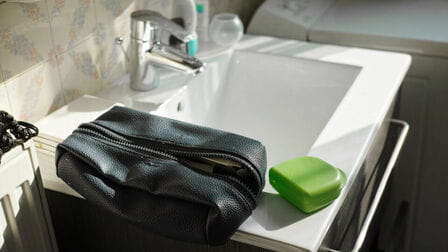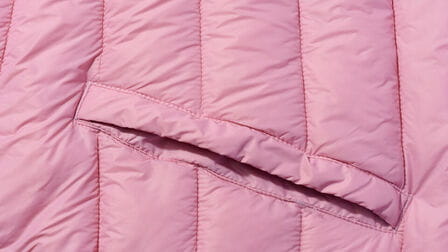Staying warm in the office during winter can be a challenge. It's important to dress professionally for work, but it's also essential to layer up in order to fight off the cold drafts from windows, air vents, and cracks under doors. Follow these simple tips on how to stay cozy at your desk without compromising your professional appearance.
Choosing The Right Clothes
Consider The Office Dress Code
Before making any drastic changes to your work wardrobe, be sure to check if your office has a formal dress code. Some traditional offices require suits or blazers, which don't lend themselves well to adding bulky extra layers for warmth. If your office has a more casual environment, you likely have more flexibility. You can check with your manager or Human Resources department if you're unsure about specific guidelines.
When buying new clothes keep the dress code in mind. Stick to professional cuts and fabrics even if you size up for extra room to layer underneath. You don't want to feel like you're wearing pajamas to work! Polyester fleece may keep you ultra warm, but likely looks too casual for most office settings.
Take Inspiration From Your Personal Style
Staying warm in the office doesn't mean you have to change up your entire wardrobe or compromising your personal style. If you typically wear dress pants or pencil skirts, stick to those as your base layer. If you prefer button-downs or blouses, continue wearing those pieces.
The key is to incorporate small tweaks and extra layers that align with your preferences. For example, opt for turtlenecks instead of crewnecks. Throw on a stylish cardigan or blazer over your usual tops. Add a splash of color with a festive scarf. Don't be afraid to accessorize!
Check The Weather Forecast
One day of light snow flurries likely requires a different strategy than a week-long cold snap dipping below freezing. Check your weather app each evening and morning before getting dressed for work. This allows you to properly prepare and modify your outfit based on the anticipated conditions.
For brutally cold days, pull out the heavy artillery of wool, cashmere, thick socks, and long underwear. During mildly crisp days, you may only need to throw on an extra sweater over a typical work outfit. Pay attention to the forecast daily to adjust accordingly.
Work Within Your Budget
You absolutely don't need to spend a fortune on new clothes just to stay warm at your desk. Hit up discount retailers like TJ Maxx and Marshall's for high quality items at low prices. Thrift stores can yield hidden gems if you take time to dig.
Stick to picking up just a few versatile extra layers each season rather than overhauling your entire work wardrobe. The right cardigan, blazer, scarf, or shirt jacket can take you through many chilly winters. Target sales racks and clearance sections when adding any new cold weather gear.
Layering Your Clothes
Wear A Base Layer Of Wicking Fabric
Start from the inside out by picking a base layer that fits snugly and helps whisk moisture away from your skin. Synthetic fabrics like polyester or nylon work well as they dry quickly, wick moisture, and provide an extra barrier from the cold. Silk long underwear is also a comfortable option.
Look for athletic brands like Under Armour that specialize in moisture wicking fabrics. You can find affordable options like long sleeve t-shirts to wear under your work tops. This extra coverage adds warmth without adding bulk.
Choose A Mid-Layer For Insulation
This middle layer should trap heat to help maintain your body temperature. Wool sweaters or vests work perfectly for this step. If your office leans more business casual, try a fleece or flannel button-down.
The key is to not wear something too bulky that restricts movement under your blazer. Thin merino sweaters come in traditional crewnecks, mock turtlenecks, and button-down cardigans to suit any style. Lightweight fleece vests also easily fit under suit jackets.
Protect Yourself With An Outer Shell
The outermost layer shields you from breezy air currents and cold window drafts. Waterproof and windproof materials like waxed cotton Barn jackets or commuter parkas work great. If you don’t want to wear a full third layer, a cozy oversized scarf can provide ample neck protection.
Look for jackets with extra length for maximum coverage against cold air. If your office isn't overly formal, puffer coats provide an ideal portable bubble of warmth. For more polished environments, wool trench coats or wool-blend peacoats deliver timeless style and wind resistance.
Specific Clothing Items To Consider
Turtlenecks
Turtlenecks provide instant neck insulation from gaping blouses or drafty collars. They contain the warmth of body heat radiating upward from the core. For a streamlined silhouette, stretchy thermals blend seamlessly under blazers and sweaters. Bold winter jewel tones inject welcome visual brightness on dark gloomy days.
The mock neck variation adds a modern, preppy vibe. Turtlenecks also pair perfectly with scarves by protecting against cold skin contact. Just avoid overly thick bulky versions that are tough to layer under tailored workwear.
Cardigans
Both classic button-downs and open waterfall variations suit professional settings with their polished look. Cotton options work well for fall and milder winter weather while wool versions provide beefed up warmth. Oversized cardigans accommodate heavier layers without squeezing uncomfortably.
Go for neutral solids if your office skews conservative or opt for eye-catching Nordic patterns to show your fun side. Merino wool and cashmere styles cost more yet promise incredible softness against sensitive skin. Ultimately cardigans provide the ultimate versatile layering piece.
Sweaters
Few things feel as quintessentially cozy as slipping on your favorite sweater. Chunky cable knit versions beg to be paired with jeans on casual Friday. For more formal settings, slim fitted merino crews ensure a tailored silhouette.
Consider sizing up when buying sweaters intended for indoor layering use. The extra room accommodate undershirts and base layers without compromising your range of motion. Strongly consider wool, cashmere or alpaca picks for optimal heat retention in cold temperatures.
Vests
For workplaces adhering to more traditional dress codes, knit or fleece vests allow for insulation without sacrificing a polished appearance. Sleeveless cuts seamlessly fit under suit jackets and blazers with only a hint of extra bulk.
If you run warm naturally or your office thermostat fluctuates, vests provide ideal light insulation for layering versatility. Swapping out lighter cotton base layers for synthetics then adding a vest quickly adjusts your warmth as needed. Down puffer vests compress easily for commuting too!
Thermal Underwear
Don't underestimate old-fashioned long underwear when confronting chronically cold indoor environments. Modern base layers borrow advanced technologies used in extreme outdoor sportswear. Synthetic moisture wicking fabrics range from silky to brushed fleece.
Mix and match separate pieces to target specific trouble spots. For example, throw on a thermal mock neck shirt with vented cross-back long underwear pants. Match set colors and patterns so only a subtle hint peeks through work clothing. Thermals work wonders as affordablefoundational layers.
Hats And Gloves
Don't forget to protect those vulnerable heat-releasing areas like your head, hands and wrists. The right gloves enable typing and writing while blocking cold external air. Knit hats sit discreetly under headset wires to contain rising body heat.
If gloves or hats violate dress code rules, try heat-trapping sleeve cuffs or wrist warmers. Even a paper thin poly-spandex liner converts dress sleeves into insulated cocoons. When escaping the cold becomes an urgent medical issue, accessories can save your extremities!
Scarves
Beyond providing neck coziness, oversized blankets scarves conveniently drape over torsos and laps for makeshift warmth. Twist, loop and wrap creatively secure with decorative pins or belts as stylish barriers from cold.
Explore chunky knits with fun fringe and texture or splurge on a vintage pure wool find. Pack an emergency cashmere or alpaca scarf in your desk to combat sudden indoor cold fronts. Scarves pull double duty as temperature regulators and fashion statements.
Conclusion
Battling the chill while maintaining workplace decorum takes strategy and preparation. Start by layering wicking base layers and breathable insulation under business casual pieces. Protect extremities with gloves and hats while relying on oversized scarves as lightweight blankets.
Don't hesitate to speak up regarding unreasonable indoor coldness too. With some thoughtful mixing and matching, anyone can conquer the winter office deep freeze! Just stay patient and proactive through the coldest months until spring eventually returns.












